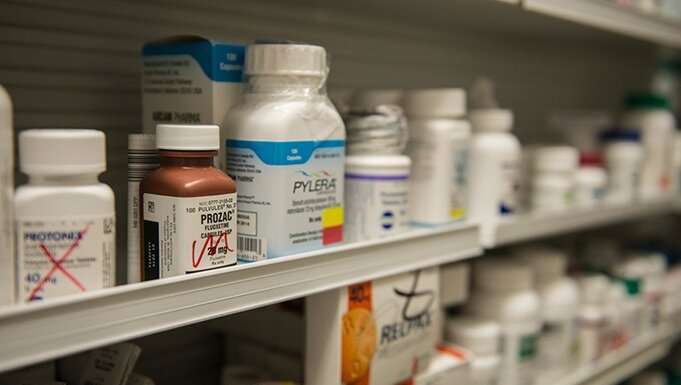
A review of 922 prescription medications taken by almost 150 million people over an 11-year period shows that just 10 of these drugs were associated with an increased rate of suicide attempts. Forty-four drugs were linked to a decrease in suicide attempts, including many that carry a “black box” label from the Food and Drug Administration warning of their association with suicidal behavior.
The study, published in the Harvard Data Science Review, identifies several drugs with the potential to prevent suicide attempts that are not currently used for that purpose, including folic acid, a simple vitamin often prescribed to pregnant women.
“There’s an anti-histamine that’s associated with decreases in suicide. There’s a Parkinson’s drug associated with decreases,” said Robert Gibbons, Ph.D., the Director of the Center for Health Statistics at the University of Chicago and lead author of the study. “If those test out in clinical trials to be real effects, we could be using more of these drugs to treat suicidal people.”
The rate of suicide has been rising for 16 years and is now the tenth leading cause of death in the United States. Most suicides occur in patients with a psychiatric disorder, such as depression. However, common antidepressant medications like fluoxetine (Prozac) carry the FDA’s black box warning, which has led to decreased use of these medications despite the benefits they might provide.
For the new study, Gibbons and his team developed a statistical tool to measure the links between drugs and suicide attempts. They analyzed data on 922 drugs with more than 3,000 prescriptions in a database of medical claims from 2003 to 2014. The data contained records of 146 million unique patients from more than 100 health insurers in the United States. For each person taking each drug, they counted suicide attempts in the three months prior to filling the prescription and the three months after taking the drug. This approach allowed them to evaluate each drug individually within a single person and see its effect on suicide attempts.
“It’s actually a very simple model that answers the question, ‘Does a suicide attempt occur more frequently after taking the drug than before?'” Gibbons said.
That analysis found 10 drugs that showed a statistically significant increase in suicide attempts, including the opioid painkiller hydrocodone bitartrate and acetaminophen (Vicodin), anti-anxiety drugs alprazolam (Xanax) and diazepam (Valium), and prednisone, a corticosteroid. A total of 44 drugs showed a decrease in suicide risk, including a large group of antidepressants with black box warnings like fluoxetine and escitalopram (Lexapro), gabapentin (Neurontin), an anti-convulsant used to treat seizures, and, interestingly, the vitamin folic acid.
Gibbons said the statistical model can be used to calculate the risk of any adverse events that happen before and after taking a medication. The Veterans Administration has already expressed interest in using the tool, and Gibbons hopes other large hospital systems and local health agencies will adopt it to help decide which drugs to prescribe, especially for patients at risk of suicide.
“What we’ve done is come up with an alternative approach to drug safety surveillance that could be used by any agency, country or formulary,” he said. “We simultaneously did this analysis on all 922 drugs, and from that model we can back out the risks for each one individually.”
Matt Wood, University of Chicago

